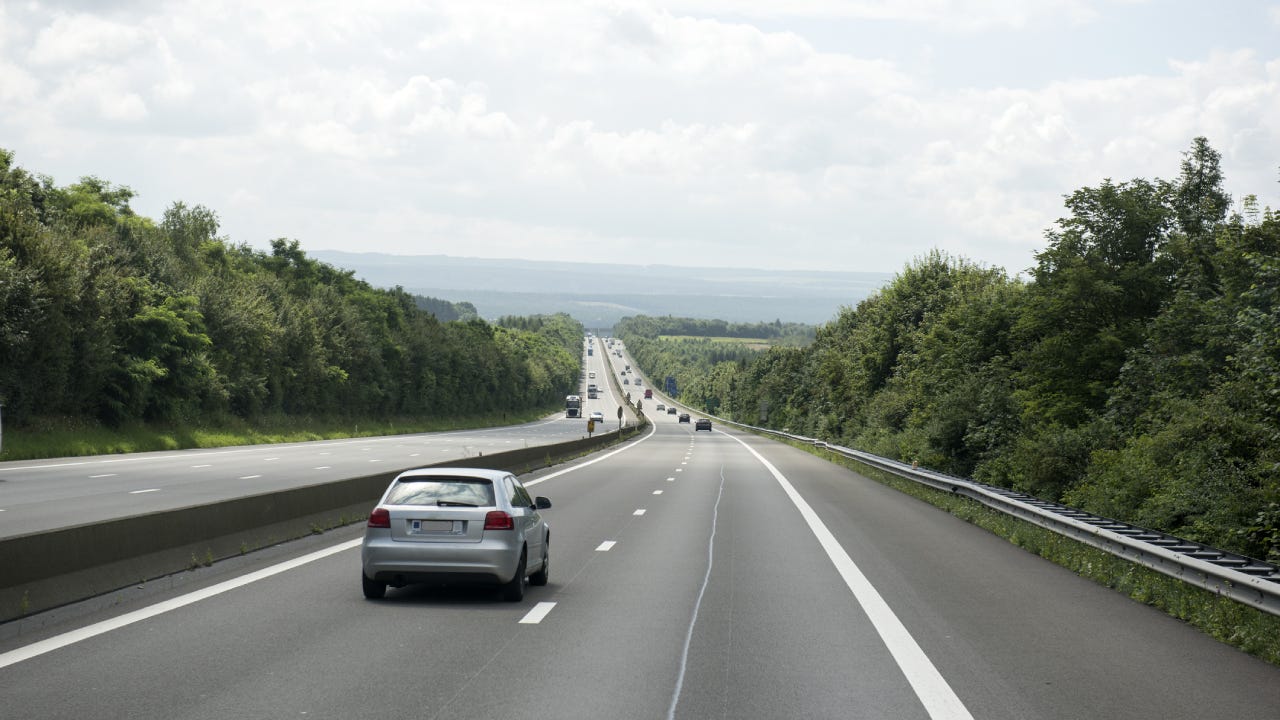Gap insurance in California: what you need to know

The Bankrate promise
At Bankrate, we strive to help you make smarter financial decisions. To help readers understand how insurance affects their finances, we have licensed insurance professionals on staff who have spent a combined 47 years in the auto, home and life insurance industries. While we adhere to strict , this post may contain references to products from our partners. Here's an explanation of . Our content is backed by Coverage.com, LLC, a licensed entity (NPN: 19966249). For more information, please see our .
Key takeaways
- Gap insurance is specifically designed for drivers with outstanding loan balances on their vehicles.
- It is typically only available for brand-new vehicles or for models that are less than three years old.
- Gap insurance is different from new car replacement coverage.
- It is typically more expensive to purchase gap insurance from a dealership than on your own from an insurer.
Some drivers might be surprised to learn that you’re still on the hook to pay off your car loan if the vehicle is totaled or stolen and unrecoverable. Sure, you may receive an insurance payout of some sort, but unless you’ve already paid down your loan significantly, the payout might not cover everything you owe. Gap insurance can help prevent steep out-of-pocket costs in instances like these. However, in California, gap coverage is often only available for newer vehicles and drivers with significant outstanding loan balances. Here, Bankrate explains how this coverage type works.
What is gap insurance?
Gap coverage covers the difference between what you owe on your auto loan and the payout you receive from your insurer if your vehicle is stolen or rendered a total loss. While it does fill in a financial gap, that is not where this coverage gets its name — it actually stands for “guaranteed asset protection.”
It’s easiest to understand gap insurance with an example. Let’s say you used a $25,000 auto loan to purchase a new vehicle, and you carry a full coverage car insurance policy. Your vehicle is stolen from your driveway, and you file a claim with your insurance provider. Your insurer, however, factors depreciation into your claim payout and only gives you $20,000. In this instance, gap insurance could help cover the remaining $5,000 you owe on your auto loan.
Typically, gap insurance is only available for brand-new vehicles or for models that are less than three years old. If you’re a driver in the Golden State looking for a new set of wheels, buying gap insurance has likely crossed your mind. Without gap insurance, your car insurance company is not concerned about the outstanding balance on your auto loan.
How does gap insurance work in California?
Gap insurance in California is generally an option to purchase if:
- You are the original loan or lease holder on a new vehicle purchase
- You have both collision and comprehensive coverage
- The vehicle is less than two to three model years old
Gap coverage is commonly confused with new car replacement coverage, but they are different. Gap coverage is a way to financially protect yourself if you have an outstanding loan on your vehicle and experience a total loss. New car replacement, on the other hand, helps drivers obtain a new version of their damaged vehicle’s make and model after a total loss. Gap insurance does not pertain to purchasing a new vehicle.
When do you use gap insurance?
In insurance terms, a total loss occurs when the cost to repair your vehicle exceeds its depreciated value (also known as actual cash value or ACV). This might happen if your vehicle is:
- Destroyed by fallen tree
- Totaled in an accident
- Stolen and never recovered
- Experiences complete engine failure
If your vehicle is deemed a total loss and the insurance payout is not enough to cover your outstanding loan balance, gap insurance can help. Remember, gap insurance is only for total losses, though. It does not help with smaller repairs or routine maintenance. For instance, if you run a stop sign and get hit, but your car is only somewhat damaged, gap coverage would not apply. However, if you have collision insurance, that can help pay for repairs in this instance.
Gap insurance vs other coverage options
Many types of car insurance can offer financial protection for the investment you’ve made in your vehicle. However, each coverage type pertains to specific situations, and it can be difficult to keep them all straight. In the table below you can see how gap insurance works in California, along with comprehensive and collision coverage.
| Gap insurance | Comprehensive | Collision | |
|---|---|---|---|
| What it covers | Only covers your car if it is deemed a total loss. Only pays the difference between the depreciated value and your remaining loan balance. | Pays for damage if your car is damaged by something other than a collision. Covers events such as fire, wind, falling objects, vandalism, theft, or flood waters. | Covers damage sustained to your car from colliding with another vehicle or object, such as a sign, fence or tree. |
| Who offers it | Many insurance companies offer it, but often call it ‘loan/lease coverage.’ Dealerships also sell gap insurance in California. | Comprehensive coverage is offered by most, if not all, insurance companies. | Collision coverage is offered by most, if not all, insurance companies. |
Where to buy gap insurance in California
While shopping, you may hear California gap insurance referred to as loan/lease coverage. Many — but not all — major insurers write gap insurance policies. For example, State Farm and Geico, two of the largest auto insurance companies in California, are not gap insurance providers.
If you’re buying a new car from a dealership, you might be offered gap insurance before you finalize your purchase. However, most insurance professionals do not recommend purchasing gap insurance at a dealership. Not only does it usually cost more up front than a gap insurance policy from a regular insurer would, gap insurance from a car dealership is usually added to your auto loan, which means you’d pay interest on it.
Gap insurance companies in California
Luckily, many car insurance companies are also gap insurance companies. If you’re wondering where to buy gap insurance, the list of providers below can be a good place to start:
- Progressive: National insurance company that offers many types of insurance. Gap coverage can be found under loan/lease coverage.
- Allstate: As the fourth largest auto insurer in the U.S., it offers several add-on coverage options and numerous discounts to potentially offset your monthly insurance premium.
- Nationwide: Offers multiple usage-based programs, where customers driving habits are factored into their rates.
The California government enacted a new law that took effect at the beginning of 2023. This bill places more oversight and regulation on the sale of gap insurance within California. The goal was to reduce unreasonable financial burdens on consumers and decrease the potentially predatory nature of some gap insurance offerings. Specifically, the bill aims to address “problematic market practices, including where GAP waivers are excessively expensive, of questionable value, are not properly refunded or not properly explained to consumers.”
This law reduces consumer risk by requiring more disclosure from gap insurance sellers and placing restrictions on selling gap insurance that covers less than 70 percent of the vehicle’s value. The law also prohibits mandatory gap insurance requirements as a term of financing.
Frequently asked questions
-
-
How much gap insurance is in California will vary depending on where you purchase the coverage. Generally, it is more expensive if it’s purchased through a dealership than through an auto insurer, but it helps to get multiple quotes from different companies.
-
No, California law prohibits gap insurance from being required. It is an optional coverage type for qualifying vehicles but is banned from being required as the condition of a loan or auto sale.
-
In most cases, yes, you need to have comprehensive and collision coverage before you can purchase gap insurance.
-
If you have it on your auto policy, you might be able to cancel your gap coverage online. However, you may need to speak directly with an insurance agent to cancel this coverage in some cases.
-
According to Bankrate’s analysis of data from Quadrant Information Services, California Capital has the cheapest average car insurance rates in California for full coverage and Geico has the lowest average rates for minimum coverage. However, this may not be true for all drivers. To calculate your premium, auto insurers look at dozens of different rating factors like your driving record, the kind of vehicle you drive, your age, your marital status and more. In California, however, insurers are more limited in what they can use to calculate your rate; they are prohibited from using your credit history and gender. Because car insurance is such an individual product, it’s recommended that you shop around and compare quotes to find the cheapest policy.
-
Related Articles


California low-cost auto insurance: What to know about the CLCA program

